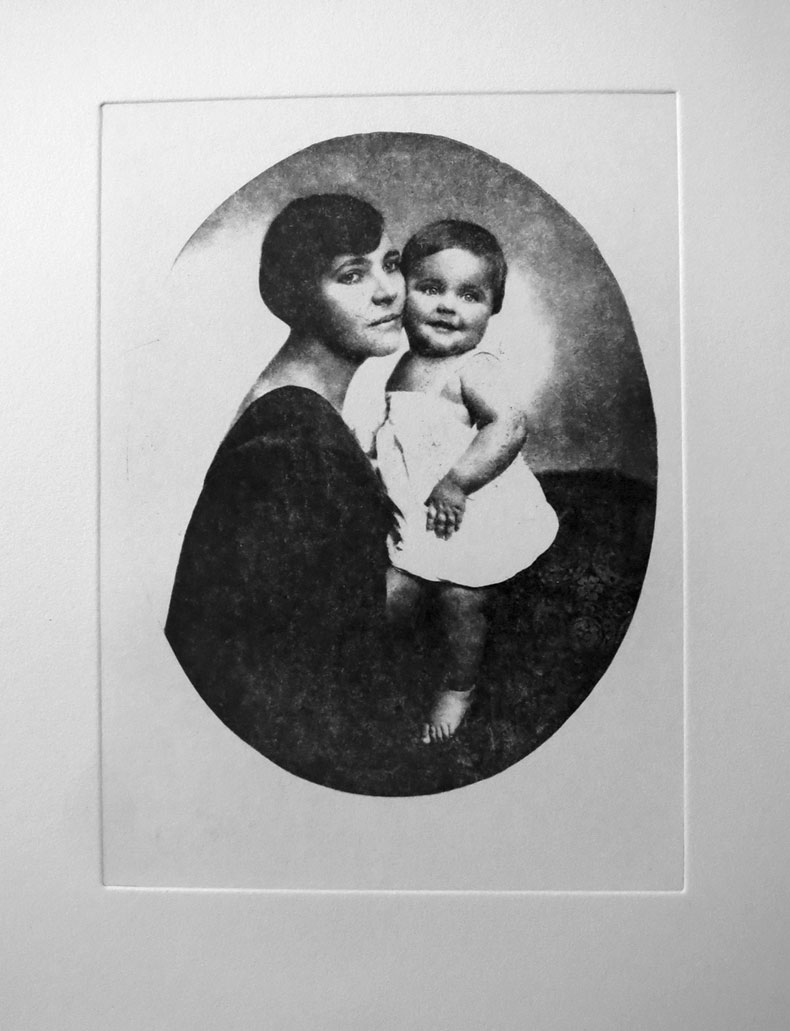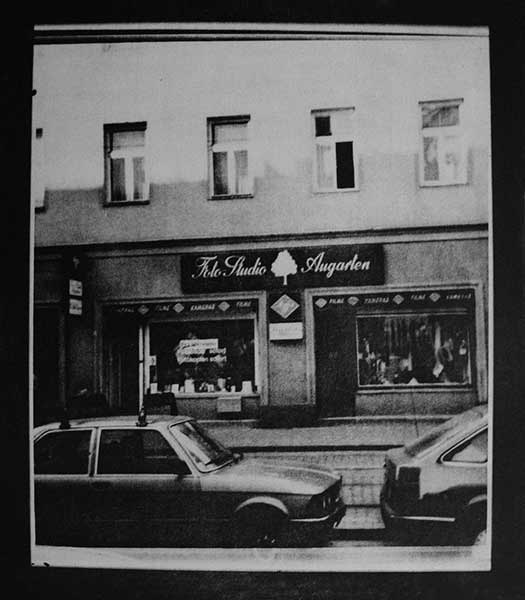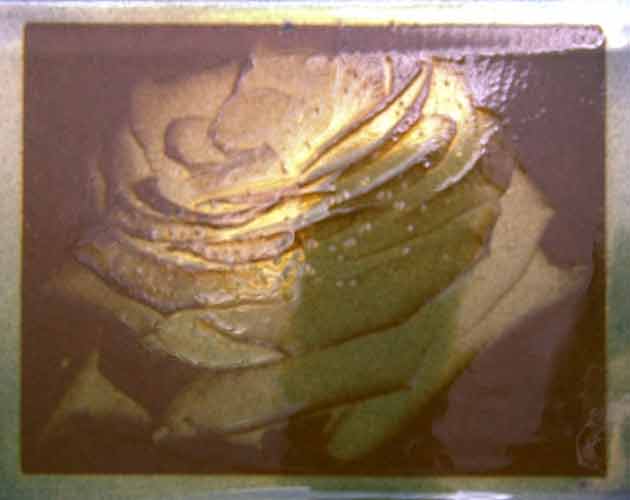Heliogravure is a manual technique of gravure printing combined with photomechanical application and aquatint.
A reversed half-tone positive image is copied onto a photosensitive gelatine paper, creating a reproduction of hardened and impressionable pieces of gelatine. This reproduction exactly matches the half-tonal quality of the slide. At the same time you prepare a copper plate with fine aquatint which provides half-tone etchings.
After pressing the “gelatine-picture” on the granulated plate the carrier paper is detached in warm water. Afterwards the plate has to be developed in water until a clear image appears. By applying asphalt varnish onto the back and the border areas the dry plate is protected from the acid. Dependent on the hardness of the film, the acid erodes the aquatint that lies beneath it and etches gaps between the metal according to the hardness of the ground in differing depths.
Finally, the gelatine layer and the aquatint are cleaned away from the copper plate.
Now the plate can be inked and wiped out in the same way as a normal aquatint so you can print on the copper printing press.
 |
 |
 |